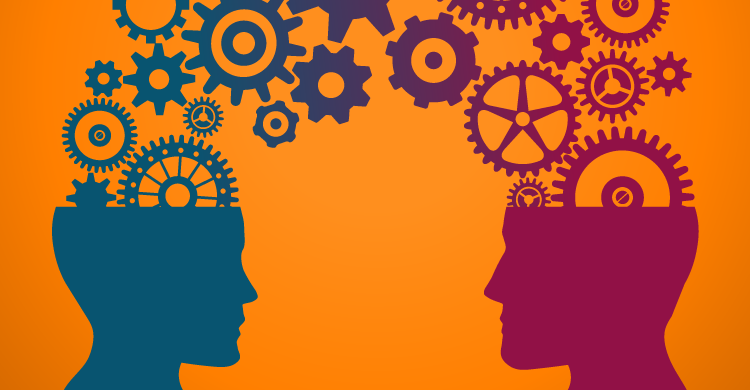Have you ever had a mathematics collaborative team meeting go awry? Was it something someone said? Was it something someone did? Did it stem from a conflict or difference of opinion? Did it stem from a lack of consensus? Was it, perhaps, just a difficult teammate? How does a team navigate these challenges?
The work of mathematics collaborative teams erases inequities in student learning and guarantees each student will learn regardless of the classroom to which he or she is assigned. In a true professional learning community culture, all teachers work together to ensure the learning of a guaranteed and viable curriculum. This is not an easy task! And certainly a task that will cause strife along the way as teams have to come to agreement on essential learning standards, design common assessments with common scoring agreements, analyze data, and collectively respond to the learning evidenced. This means purposeful norms are needed to define the behaviors of the team members.
I find collaborative teams often have norms in place to address their work together. However, these norms frequently stop at professional courtesies like:
- Come on time
- Be engaged
- Silence cell phones
- Come prepared
- Listen attentively to one another
While such a list of norms reflect excellent behaviors of teammates, these norms do not distinguish a mathematics collaborative team meeting from any other teacher/administrator meeting one might attend. Also, they do not address the unique adult actions that might need to be remedied for more efficient and effective meetings. This, in turn, creates openings for nonproductive and possibly contentious meetings. Rather than stop at professional courtesies, consider the collective commitments that must be agreed upon for student learning to be the focus of the collaborative team meetings.
Collective commitment norms vary team by team based on the adults composing each one. For example, when working with a seventh grade pre-algebra team, I noticed that the team members continuously interrupted each other, seldom listening to one another. This meant each teacher was repeating herself multiple times until each person had heard the comments. Clearly, this was not the most effective use of the precious minutes collaborative teams meet each week. Upon sharing my observations with them and asking them to create a solution, they chose to cross their fingers as a signal of wanting to speak next. Everyone then knew to listen and who would first respond. This has saved many valuable minutes during their meetings!
On another team, I noticed a geometry teacher sabotaging the meetings by never giving meaningful input and, instead, working to get the meeting off track. When later asking why in an individual coaching meeting, she let me know that she needed process time to think. She could not look at a test for the first time and certify it because she needed more time to think about the targets and questions. She could not determine homework or targets on the fly either and did not feel comfortable making those decisions without careful thought. These were all valid points! When brought to the team, they made a collective commitment to always provide any artifacts to be addressed at a collaborative team meeting to one another at least 24 hours in advance of the meeting so people could choose to look it over during a prep period or at home. Suddenly, this team became productive with meaningful and thoughtful voices in the room during meetings.
In yet another team meeting, one teacher consistently administered his Advanced Algebra tests differently than the rest of the team and often did not come prepared to data analysis meetings with his results. This caused great conflict on the team so they created a conflict norm that said any person on the team would speak to another if they felt there was a conflict (without talking to others on campus). The team also agreed to additional steps to ensure that the conflict resolution was effective by including additional staff members if needed. They decided that if team conversations did not correct the situation, an instructional coach would be invited in to facilitate a discussion and, finally, if needed, an administrator would be brought into a team meeting to facilitate or address the conflict. There are times when an administrator is needed to remind teachers of the expectations when working together in collaborative teams, but this should only be employed after the team has themselves worked to correct the issue using their collective commitments to one another.
Teams will also need to address consensus. In Learning by Doing, Rick DuFour explains that consensus means every voice has been heard and the will of the group is clear – not that everyone agrees. Teams may debate points or otherwise share their opinions so each voice is heard and then publicly do a fist-to-five to see the agreement level of the teammates. Showing a 3-5 means a team member generally to vigorously supports the issue while 1-2 shows little to no support. This is a better system compared to a yes/no voting structure. To vote yes/no means people will usually vote no if they are not entirely in agreement because it feels safer. However, giving levels of agreement allows people to tentatively agree or disagree. The team can determine what the will of the group means related to the public vote. And, if it is so crucial a topic that there must be consensus, teams may need an additional norm saying they will all implement any decision reached using consensus.
Collective commitment norms come in many forms. A few others I have seen teams use include:
- We will talk about a student as if the parent is in the room.
- We will only talk about those things we can control when addressing the four critical questions.
- We will assume good intent when sharing information via email and will never send the email in all caps.
- We will agree on common student learning targets to use in each unit.
- We will collaboratively design a common assessment, calibrate our scoring of it, and analyze the data and student work from it to make future instructional decisions.
- We will work together to determine effective ways to respond to student learning so all students learn at high levels.
Think about your current collaborative team and the norms you live by as you focus your energies on student learning. Are they just professional courtesies or do they extend to being collective commitments to one another?
Roland Barth says “Teacher and student learning goes hand in hand – or it doesn’t go at all.” (Barth, 2001, p. 23) In order for teachers to build shared knowledge and learn from one another, collective commitments are needed. It may be time to re-evaluate your team agreements with one another to work effectively and efficiently. What will be your mathematics collaborative team collective commitments for 2016-2017 so you ensure the learning of all students at high levels?
References
Barth, R. (2001) Learning by Heart. San Francisco: Jossey-Bass.
DuFour, R. Dufour, R., Eaker, R, & Many, T. (2010). Learning by doing: A handbook for Professional Learning Communities at workTM. Bloomington, IN: Solution Tree Press
[author_bio id=”354″]






